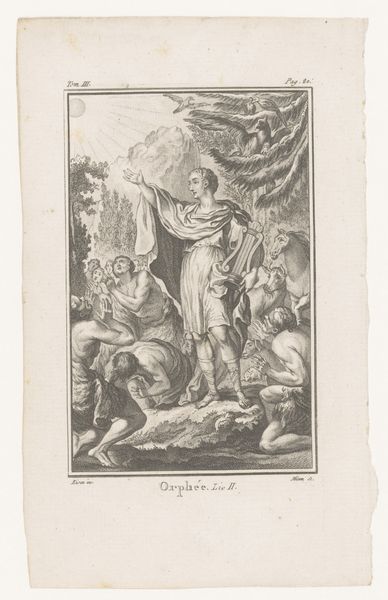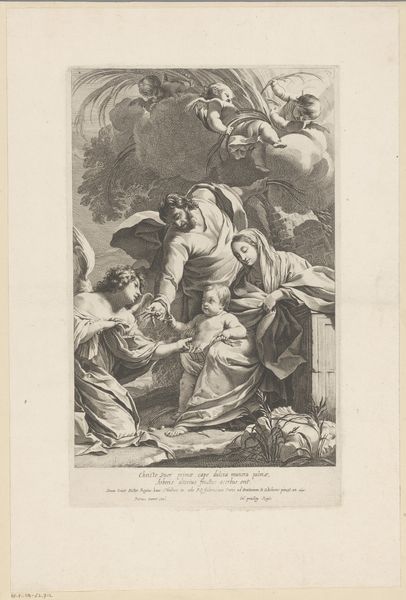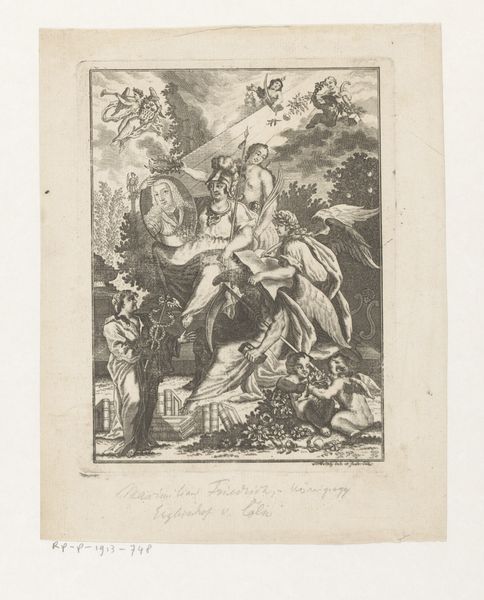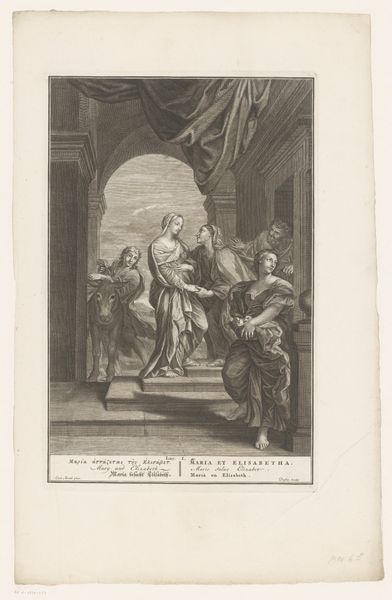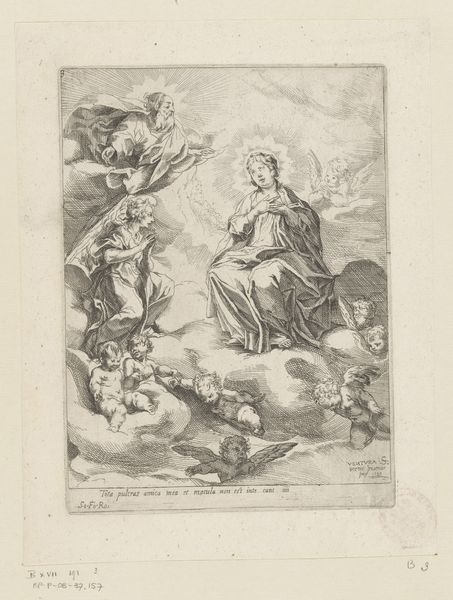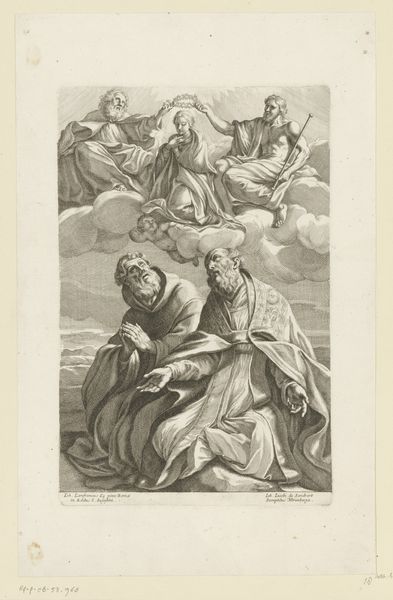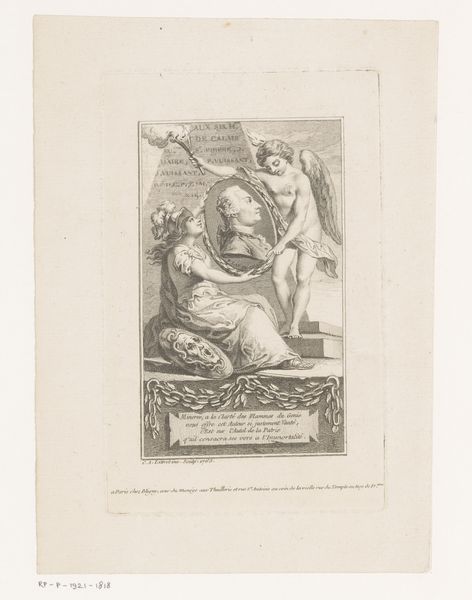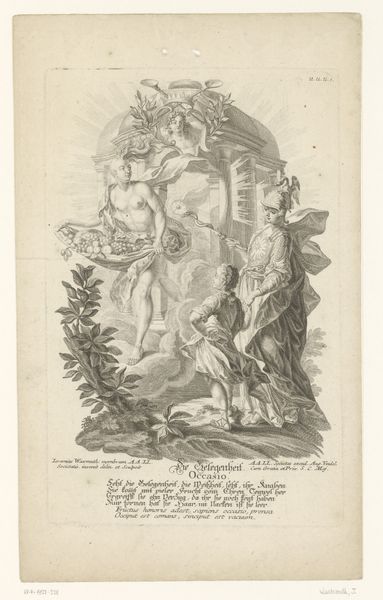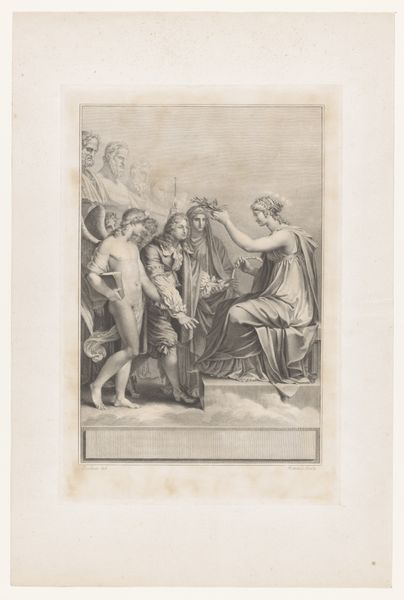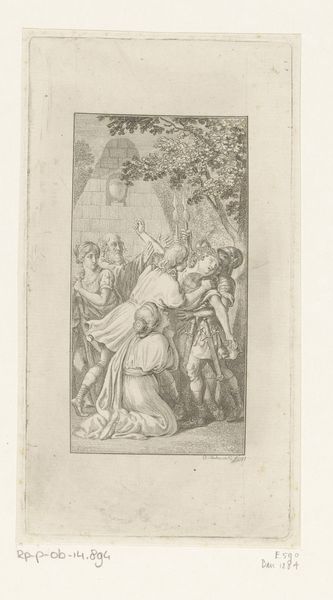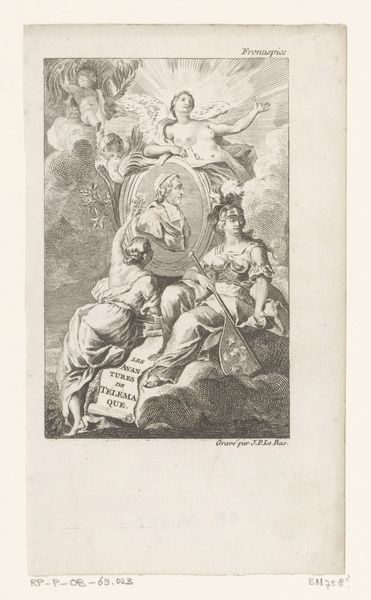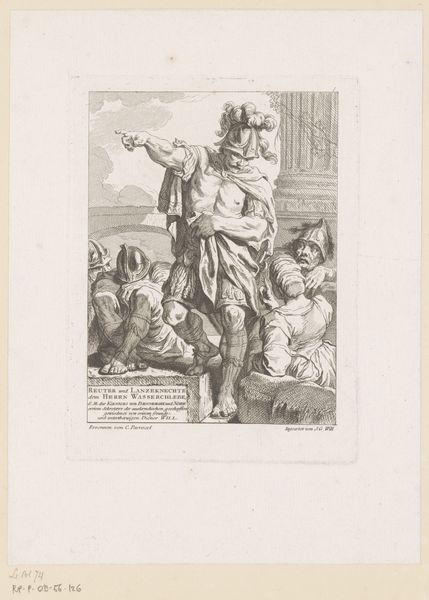
engraving
#
baroque
#
figuration
#
history-painting
#
engraving
Dimensions: height 120 mm, width 76 mm
Copyright: Rijks Museum: Open Domain
Editor: Here we have Bernard Picart's "Stoning of St. Eusebius," an engraving from 1705. It's quite striking how much detail he managed to achieve with just lines. It feels so brutal, raw even. What do you see when you look at it? Curator: I'm drawn to the actual process of this engraving. Think of Picart's labor, meticulously carving into the metal plate to create this scene. The *material* itself—the copper, the ink, the paper—speaks volumes about the circulation of images and ideas in the 18th century. It was a commodity as much as a means of religious instruction, wasn't it? Editor: That's a point I hadn't considered, the print as commodity. The materials involved seem simple, but the time taken is clearly considerable. Curator: Exactly. Look at the way he renders the stones themselves. They are not idealized objects, but roughly hewn, functional tools of violence. Their very texture emphasizes the physical labor involved in both their use *within* the image, and the artist’s labor in creating it. And the contrast – you’ve got the saint’s almost elegant drapery set against these jagged, heavy rocks. Do you see the contrast of high and low status, artistic skill with crude brutality? Editor: I do, now that you mention it! So you're saying the artwork highlights a social tension or class struggle evident in the image? Curator: Absolutely. Picart isn’t just depicting a religious scene; he's showing us a stark reminder of social forces, embodied by those stones and the act of printing itself. What started as craft has become religious artefact and collectible art. Editor: That gives me a lot to think about. I'm used to considering subject matter, but focusing on the process and materials reveals so much more about its place in society! Curator: It shows that even a seemingly simple print has a complex history embedded within its very material being, doesn’t it? We can look at engravings as simple images, but in this era engravings helped establish religious power and wealth and facilitated its distribution and access.
Comments
No comments
Be the first to comment and join the conversation on the ultimate creative platform.
